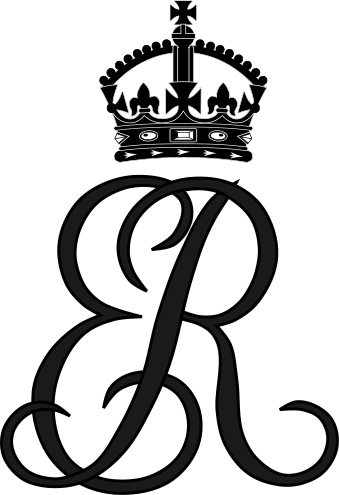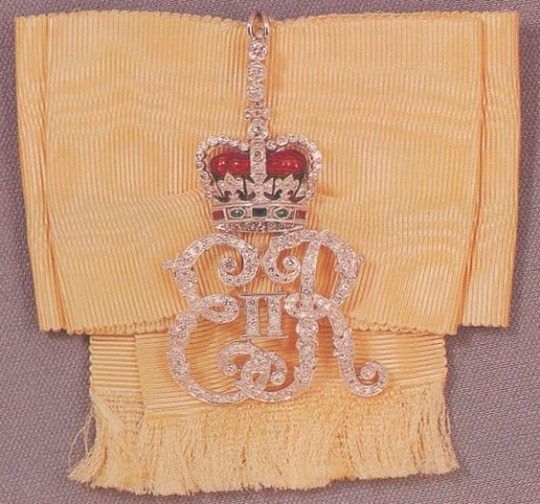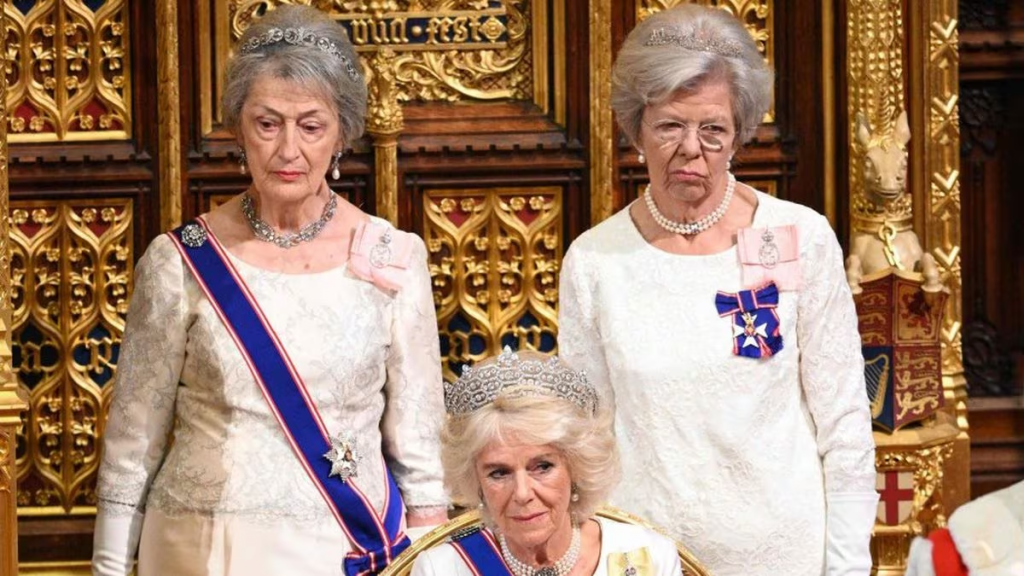Please note that the terms monogram and cypher are used interchangeably in this article.
As someone interested in monarchy, Queen Elizabeth II was a fascinating figure whom I admired, so her death in 2022 was challenging. However, it allowed me to witness a historical event, the funeral of a British Sovereign.
Watching the events leading up to the Queen’s funeral, one thing that caught my eye while watching the video of the Queen’s body arriving in London and the transfer of her coffin to the royal hearse that she helped design decades ago. The royal cypher on the side of the car stuck out to me. It was not Queen Elizabeth II’s iconic official royal cypher, featuring a crowned EIIR, a staple of royal symbolism during her long reign.
On each side of the hearse was a beautifully designed E crowned with St. Edward’s Crown. Had it not been a car she designed and had been some antique, I might not have thought much about it, but I was intrigued because monograms and cyphers are one of those things I love to look into.

Further investigation brought me to a badge I had saved labelled “Lady of the Bedchamber”, which I had always thought was for the Queen Mother. The Queen Mother’s monogram featured the Tudor Crown and a “script” ER, as opposed to Elizabeth II’s more non-script E used in EIIR and on her Personal Flag. I think this badge should be labelled a Woman of the Bedchamber rather than Lady of the Bedchamber—I will explain that further.

(Source Unknown)

(Wikimedia)

(Wikimedia)
The Queen’s personal flag was usually used to relate to the Commonwealth; for example, when she visited the Commonwealth’s headquarters at Marlborough House, the Queen’s personal standard was flying rather than the British Royal Standard. It was also used as a badge or motif on her personal standards for some commonwealth countries where she was head of state, such as Australia, Canada, and Jamaica.
In my research, I came across the Mistress of the Robes badge of Queen Elizabeth II, using the script EIIR, and the E was the same design. This is very similar to her robe of estate from her coronation in 1953, which featured an embroidered script EIIR.

(Source Unknown)

(Royal Collection Trust)
I further looked at some of the images from previous State Openings of Parliament attended by Queen Elizabeth II. I found a picture of Lady Susan Hussey from 2004 wearing a version of the Woman of the Bedchamber badge called Lady of the Bedchamber. I can’t tell if it is St. Edward’s or Tudor Crown, but the encircled script E stands out. Another image, this time of Lady Susan Hussey and Jennifer Gordon-Lennox, both wearing the badge. Lady Susan and Mrs Gordon-Lennox were Women of the Bedchamber rather than Ladies of the Bedchamber; of course, they could share the same badge, but the roles are slightly different.

(Photo by Tim Graham)

(Photo by Paul Edwards)
Further, I thought back to a photo that I saw of Prince Harry, Duke of Sussex, posing for a personal photo on the table behind him was a card. In the more high-quality version I saw, the image on the front of the card was similar to the crowned E cypher on Her Majesty’s hearse. I can’t find a higher-quality image than the one below. I began to wonder if this was indeed the personal cypher of the Queen and could have been used on personal cards or invitations to family events.
It is not unknown for monarchs to have more than one cypher or monogram; for example, Queen Margrethe II of Denmark had an official monogram with MR2—which, according to the Danish Royal Family site, is still her monogram—along with one often called the Queen’s “private” monogram featuring two intertwined letters M.
King Harald V of Norway seems to have used his H monogram with the numbers five and the Roman numeral V.
One possibility is that the script E was the Queen’s when she was still Princess Elizabeth before her accession, this continued as a personal monogram for Her Majesty replacing the Coronet of a Daughter of the Sovereign with St. Edward’s Crown. Using the Tudor crown on the badge of a Woman of the Bedchamber could be a reuse from a previous sovereign. Sometimes, jewellery is redone and modified. I will also look more into this and share what I come across.
